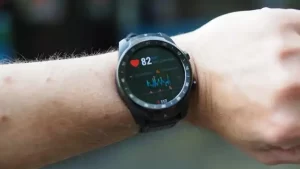Develops a new virus-like vector for safe and efficient in vivo gene editing
- Statins Lower Blood Lipids: How Long is a Course?
- Warning: Smartwatch Blood Sugar Measurement Deemed Dangerous
- Mifepristone: A Safe and Effective Abortion Option Amidst Controversy
- Asbestos Detected in Buildings Damaged in Ukraine: Analyzed by Japanese Company
- New Ocrevus Subcutaneous Injection Therapy Shows Promising Results in Multiple Sclerosis Treatmen
- Dutch Man Infected with COVID-19 for 613 Days Dies: Accumulating Over 50 Virus Mutations
Cell: Develops a new virus-like vector for safe and efficient in vivo gene editing
When it comes to Dr. David Liu , the first thing that comes to our mind are new gene editing tools such as Base Editor and Prime Editor .
Unlike CRISPR-Cas9 gene editing, a series of precise gene editing tools developed by Dr. David Liu’s team do not cause DNA double-strand breaks (DSBs) , so they are considered safer and more valuable for clinical applications.
In addition to successive breakthroughs in scientific research, Dr. David Liu has also founded a number of companies in the field of gene editing and therapy.
Beam Therapeutics , a base editor – based company he founded , recently announced that it will launch the first human body in the second half of this year.
Clinical trials for the treatment of sickle cell disease and beta-thalassemia. Prime Medicine , which it founded based on Prime Editor, also received a large financing of more than $300 million.
For gene therapy, in addition to the gene editing tool itself, the delivery vehicle is equally important.
At present, the delivery vectors in clinical application can be mainly divided into viral vectors (lentivirus, AAV, etc.) and non-viral vectors (LNP, etc.) .
But at present, these vectors all have some shortcomings. For example, lentiviral vectors can only be used for delivery to cells in vitro, while AVV vectors have low capacity (can only accommodate 4.7K bases in length) , and LNP can only target the liver at present. and other few organs.
On January 11, 2022, Dr. David Liu’s team published a research paper entitled: Engineered virus-like particles for efficient in vivo delivery of therapeutic proteins in the top international academic journal Cell .
This team developed an engineered virus-like particle ( eVLP ) that can overcome multiple bottlenecks in protein complex delivery:
1) eVLPs are DNA-free and directly deliver the ribonucleoprotein (RNP) of the gene editor with minimal off-target;
2) Base editing delivered by eVLP effectively edited 63% of the cells in mouse liver and reduced the level of PCSK9 in serum by 78%;
3) Base editing delivered by eVLP improves vision in a mouse model of genetic blindness.
The in vivo delivery of gene editing components in the form of ribonucleoprotein (RNP) has more safety advantages than direct delivery of nucleic acids.
In this study, Liu Ruqian’s team developed engineered DNA-free virus-like particles (eVLPs) , which are based on retroviruses with numerous modifications and optimizations to overcome packaging, delivery, and release.
The bottleneck, in this paper is a fourth-generation eVLP that can efficiently package and deliver base editors and the ribonucleoprotein (RNP) form of CRISPR-Cas9.
Enables efficient gene editing in human cells, mouse primary cells, and a variety of mouse organs and tissues (liver, brain, eye) .

In eVLPs, their cellular and organ targeting can be altered by using different glycoproteins. A single injection of eVLPs into mice enables efficient gene editing in different organs.
Liu Ruqian’s team used eVLP to deliver the base editor ‘s ribonucleoprotein (RNP) , which was able to successfully edit 63% of mouse liver cells and reduce the level of PCSK9 protein in serum by 78%.
The PCSK9 protein expressed by the PCSK9 gene can bind to the LDL receptor (LDL-R) on the surface of hepatocytes to degrade LDL-R, thereby increasing the level of low-density lipoprotein cholesterol in plasma.
Reducing the expression of PCSK9 gene or inhibiting the binding of PCSK9 protein to LDL-R can reduce the level of low-density lipoprotein cholesterol in plasma, thereby preventing the occurrence of cardiovascular disease .
Liu Ruqian’s team also verified the human congenital amaurosis mouse model .
The experimental results show that the ribonucleoprotein (RNP) of the base editor (Base Editor) delivered by eVLP can effectively repair this genetic blindness mouse model gene mutation sites in the mice and partially restored vision in mice.
In addition, Liu Ruqian’s team also tested the off-target situation of DNA level and RNA level of gene editing delivered by eVLP in vitro and in vivo.
The test results showed that almost no off-target was detected at either DNA or RNA level. Compared with the use of AAV virus Or plasmid vector delivery has obvious advantages.
Collectively, these findings demonstrate that engineered virus-like particles ( eVLPs ) serve as a potential therapeutic macromolecule delivery vehicle that combines key advantages of viral and non-viral delivery to deliver gene editing tools To cells and organs, high-efficiency gene editing can be achieved with minimal off-target effects and high safety.
Paper link :
https://www.cell.com/cell/fulltext/S0092-8674(21)01484-7
Develops a new virus-like vector for safe and efficient in vivo gene editing
(source:internet, reference only)
Disclaimer of medicaltrend.org




